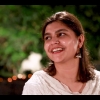With training in Sanskrit and Prakrit and a DPhil in Jainism from the University of Allahabad, Dr Singh has spent the past 30 years of his life researching on Jain canonical literature written in Prakrit language. He exhibits a wide range of expertise across the fields of linguistics, traditional Indian grammatical traditions, language pedagogy, manuscriptology and religious studies, and is ever ready to help a student evincing a keen interest in learning the language.
In this interview, Dr Singh talks about his career, interests, contributions to scholarship in Prakrit and Jainism, and the need to preserve Prakrit language studies in India. Following is an edited transcript of the interview conducted on October 3, 2019, at Bhogilal Leherchand Institute of Indology, New Delhi,
Anando Ghosh (AG): Sir, you are one of the leading scholars of Prakrit studies in the country. How were you drawn towards the study of Prakrit given that it is considered to be an unconventional subject?
Ashok Singh (AS): It all began when I read Kalidasa’s Abhijnanashakuntalam and Shudraka’s Mrichhakatika as postgraduate student of Sanskrit studies. What fascinated me most about these works was that several characters spoke in Prakrit, and different types of Prakrits were employed for different purposes.
Although this language had an uncanny resemblance to Sanskrit, I was disappointed when I tried my hand at translating the verses, and I said to myself that something ought to be done about it! So, in the second year of my MA programme, I opted for an optional paper in the linguistics of Pali, Prakrit, and Apabhramsha languages.
This was actually a turning point in my academic journey; I was so fascinated by Prakrit that I decided to do a DPhil in medieval Prakrit Jain literature. During the course of my DPhil, I came across secondary sources on a genre of literature known as prabandha which is thought to have a tendency to support the usage of Sanskrit, but my preliminary readings showed that they supported popular words from vernacular languages like Hindi far more than words derived from Sanskrit. I further developed this idea during my postdoctoral fellowship at Parshvanath Vidyapeeth in Varanasi. Since then, I have been very interested in looking at connections between Prakrit and modern Indian languages, and much of my research time is devoted to the grammar of Prakrit and the use of Prakrit by the Jains for documenting their doctrinal teachings.
AG: I believe that must involve a lot of work! How do you divide your attention between the study of Prakrit as a language and as the basis of Jain canonical writings?
AS: I have been following a simple mantra since the very beginning of my academic career: I research on Prakrit grammar to teach, while I work on Jain canonical scriptures to write and publish. I have had the privilege of supervising eight doctoral students who have gone on to become Prakrit masters of great repute in Indian universities. Besides this, I have also been instrumental in organising All India Summer School on Prakrit Language and Literature [a three-week residential camp] at our institution for the past 15 years. What matters most is that students are genuinely interested in learning the language and are ready to devote their time for gaining a solid ground in its rich linguistic and literary traditions.
AG: Sir, your continuing commitment to Prakrit language studies in India is remarkable. I am compelled to ask how you succeed in striking a balance between academic and personal commitments?
AS: To be frank, Anando, I have never considered academia to be a part of my life. It is my life! I feel particularly delighted when enthusiastic students come to me with an honest yearning to learn the language. I began my teaching career right after my PhD in 1987 as a tutor for the PG diploma course in Prakrit language at Parshavanath Vidyapeeth. In fact, some of my works have been inspired by my interaction with students. For instance, I worked on the Sanskrit rendering of niryukti, an ancient commentary on Jain scriptures written in Ardhamagadhi Prakrit around fourth century CE by Indian scholars and ninth century CE by Western scholars. I also undertook a metrical analysis of the work followed by its translation in Hindi for the sake of my students. This gives me immense satisfaction and every time I recall this incident, I do so with fondness!
AG: It is certainly fascinating to hear about your research endeavours. What are some of the projects that you are currently involved in?
AS: Currently, I am working on two Prakrit texts belonging to the fifth century CE; one is a canonical Svetambara text in Ardhamagadhi called Nandisutra while the other is the Dhyanashataka of Jinabhadragani Ksanashramana composed in Mahashtri Prakrit. The Sanskrit rendering of the texts is near completion and their English translation is expected to be out for publication by early 2020. I have also started translating another canonical Svetambara text of the third century CE by the name of Sthananga which contains an interesting account of Jain metaphysical concepts.
AG: Why do you think audiences should read Prakrit literature in the first place? What ‘new’ can they hope to discover?
AS: I have been emphasizing this time and again that to be able to appreciate Prakrit literature, you must know the language. And trust me, it is not very difficult to do so! It is my personal opinion that the grammar of Prakrit is relatively easy to master when compared to Sanskrit and it is a beautiful language in its own right, characterised by soft consonantal sounds suited to the tongue of the local population. However, this does not stop Prakrit from becoming an artificial language for court poetry in later times when it ceased to exist as a spoken language. The early scriptures of the Jains were written in Prakrit and as a result, it is considered sacred by the two sects of Jainism, namely Svetambara and Digambara.
Many non-canonical Jain texts of religious importance and otherwise were also composed in Prakrit giving rise to a number of local legends and folk narratives. Several works were also composed to subvert values enunciated in hegemonic accounts. For example, the Paumacariyam of Vimalasuri was written around the fifth century CE to create an alternate version of the Valmiki’s Ramayana. We also have a collection of lyrical love poetry in the form of the Gathasaptasati which beautifully captures the sentiments of love in union and separation in ancient rural India. If you are interested in history and epigraphy, you have the option of studying the inscriptions of Ashoka as well as reading accounts of the ancient kingdom of Gandhara in the form of coins, plates, and manuscripts. As far as discovering something ‘new’ is concerned, I would leave that to the connoisseurs depending on their taste and eye for detail. But I should let you know that study of Prakrit literature does not simply stop at textual studies based on literary evidences. Its scope can be extended to the disciplines of historical linguistics, sociolinguistics and socioanthropology, theology, oriental studies, gender studies, environmental, and peace studies as well!
AG: But is the current state of Prakrit studies in India and abroad as impressive as its scope? How would you like to describe the situation?
AS: This can be a little tricky to answer especially because the state of Prakrit studies has never been good compared to other areas of Indology especially the study of Sanskrit language and literature. We are actually in a deplorable situation right now and there is an urgent need to train a cohort of young Prakrit scholars. I do not know how to put it, but Prakrit has always been in the shadow of either Sanskrit or Hindi and has never had its own rightful place in academic institutions in India and abroad. Very few universities in India offer a degree entirely in Prakrit; the most convenient medium for most academic agencies is to offer the language as an optional paper or module in conjunction with Pali language studies. Suniti Kumar Chatterjee, Sukumar Sen, Satya Ranjan Banerjee, and P.L. Vaidya were some of the very learned scholars of Middle Indic languages while the West has seen the contributions of scholars like Luigia Nitti-Dolci, R.L.Pischel, Ludwig Alsdorf, and Albrecht Weber. But the question is what interventions would today’s young Prakritists take to move us beyond the scholarship of these legends?
AG: So, do you think that the study of Sanskrit has been over-emphasised in academic institutions while Prakrit remains neglected as ever?
AS: I will have to explain the hierarchy of languages to do some justice to this question. Vedic Sanskrit was considered to be the language of the gods whereas Classical Sanskrit was the language of the chancellery in ancient India. In that respect, Sanskrit has always had a status higher than any other Indic language, and with its long history of patronage and hegemony, it became the language of ancient and early medieval Indian writings. It is interesting to note that the most ancient schools of Buddhism and Jainism preferred to document their teachings in Pali and Prakrit languages respectively but switched to the use of Sanskrit in later times for the purpose of canonisation. After the discovery of Sanskrit as an Indo-European language, much of Western scholarship was devoted to the study of writings in Sanskrit and Hinduism. Early colonial writings on India segregated languages on the basis of religious affiliation and as a result, Prakrit became synonymous with Jainism. This is also one of the reasons why it received neglect at the hands of scholars. There is certainly no doubt that Prakrit literature cannot compete with the vast body of works in Sanskrit, but I am also the last person to deny that Prakrit has some really interesting research areas that are yet to be explored!
AG: In your opinion, how can audiences be attracted to the study of Prakrit?
AS: The first step in this direction is awareness and it is high time that we make a conscious effort to familiarise audiences with Prakrit language in general as well as attract students to undertake its study. But the point is are there enough qualified Prakrit teachers in India? With regards to the reception of Prakrit in the academia, I often hear complains of two divergent nature: one party criticizes Prakrit for being too difficult to comprehend while the other relegates it to being too easy a language that needs no serious attention. In this tussle, it is Prakrit alone that has suffered. But other potential factors cannot be ruled out. For the promotion of a language in any setup, assistance from governmental institutions is indispensable. How are we to think of teaching or researching if there are not enough policies in place that allow us to do so? Together with this, we need the support of nongovernmental bodies and funding agencies for long-term financial considerations. Thankfully, Rashtriya Sanskrit Sansthan in New Delhi has constituted a committee to look in this direction and they have completed the task of funding the translation of 40 Prakrit texts into Hindi in the past five years. I would certainly laud this effort, but I have to confess that it is just not enough. We need to rethink of strategies through which scholarly works can reach the public. Prakrit is as much an intrinsic part of our heritage as is any other language whether living or dead, and audiences have to be acquainted of its contribution to the making of Indian history.
AG: What scope does Prakrit language hold for prospective scholars?
AS: There are several promising avenues that Prakrit scholars can venture into. Bhogilal Leherchand Institute, for example, has over 26,000 Prakrit manuscripts. Many of them have been digitised while several of these are yet to be touched upon. This calls for an enormous amount of labour: preparation of a critical edition, rendering the Prakrit version into Sanskrit, authentic translation with notes, and a review of any commentaries of the said manuscripts. A complete work on all these manuscripts can take around 100–200 years for its fruition. So, you can see a good scope for employment in this direction but there is a problem: the demand for committed Prakrit scholars is high but the supply chain is faulty. If this can somehow be corrected, it will only be for the greater good of Prakrit studies as it will provide incentives to budding Prakritists to continue their research in the same vein.
AG: If you could also offer some advice to budding Prakritists…
AS: As an old friend of the language, my only request to prospective Prakrit scholars is that they should prevent Prakrit studies from dying out in the academia. If Prakrit language studies are not preserved in universities and other academic forums, this would be a serious loss for India and its rich heritage of language traditions. Scholars should train themselves in all aspects of the language be it linguistics, grammar and rhetoric, literature, and religious studies. What we now have is a dearth of scholars who are trained in traditional grammar studies and that is something that needs to be seriously revived. I would also advise budding Prakritists from India to critically analyse literary works and approach them from interdisciplinary perspectives as is the need of the hour. There has been an increased interest among Jain communities to discover their rich cultural heritage and they have been providing a great deal of opportunities to scholars interested in Prakrit and studies in Jainism. Prakritists should certainly keep their ears open to the plethora of options available for them!











